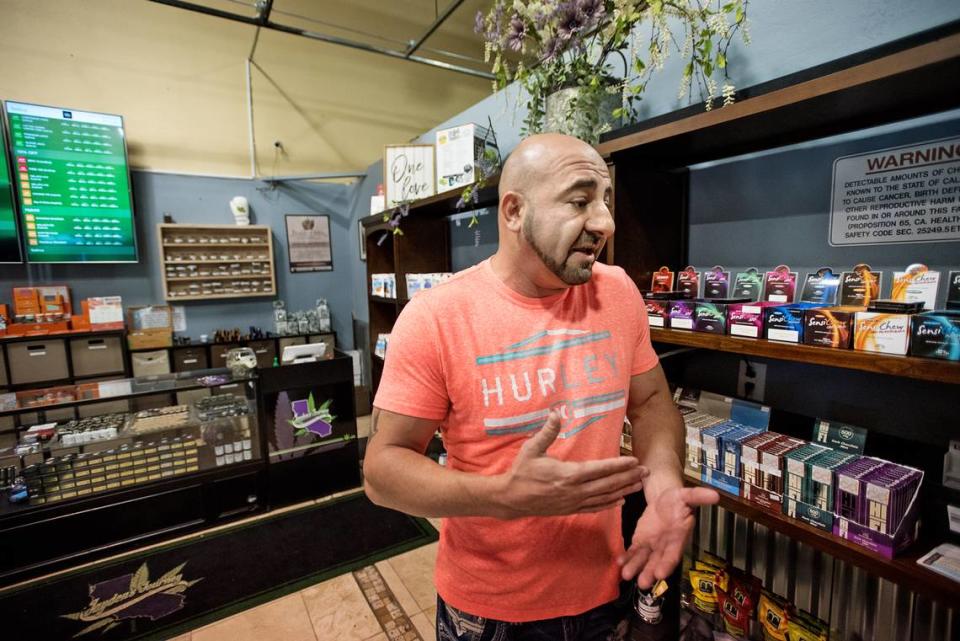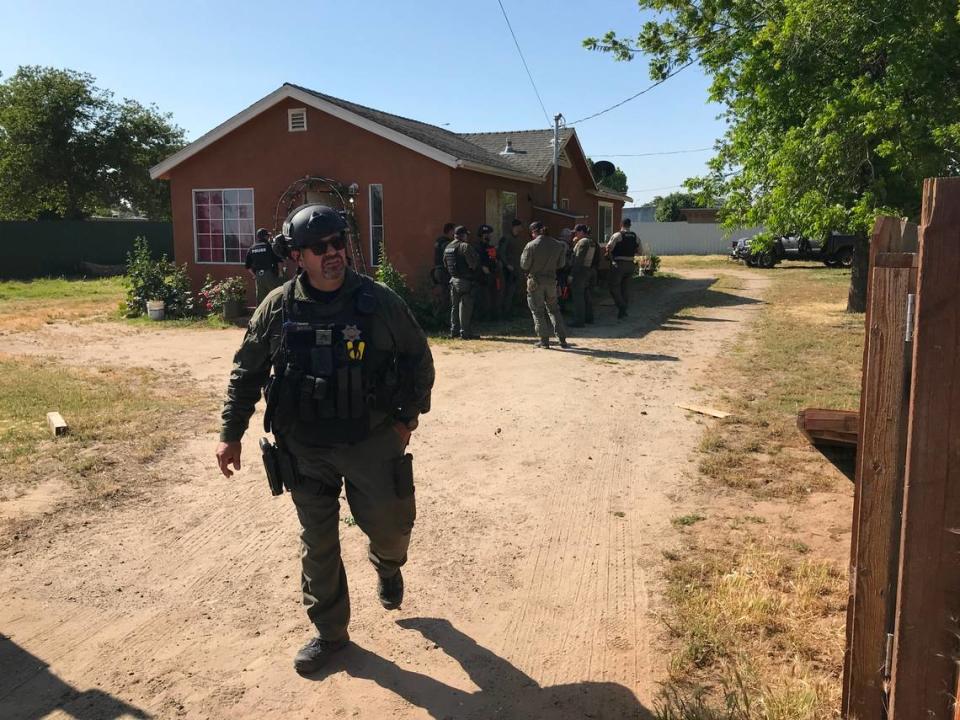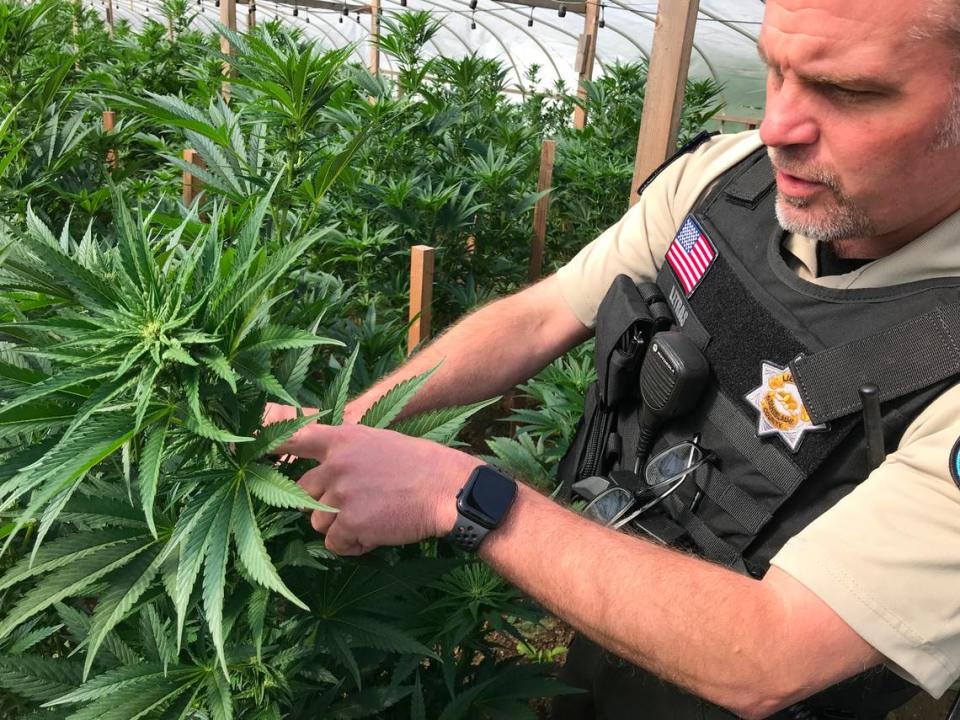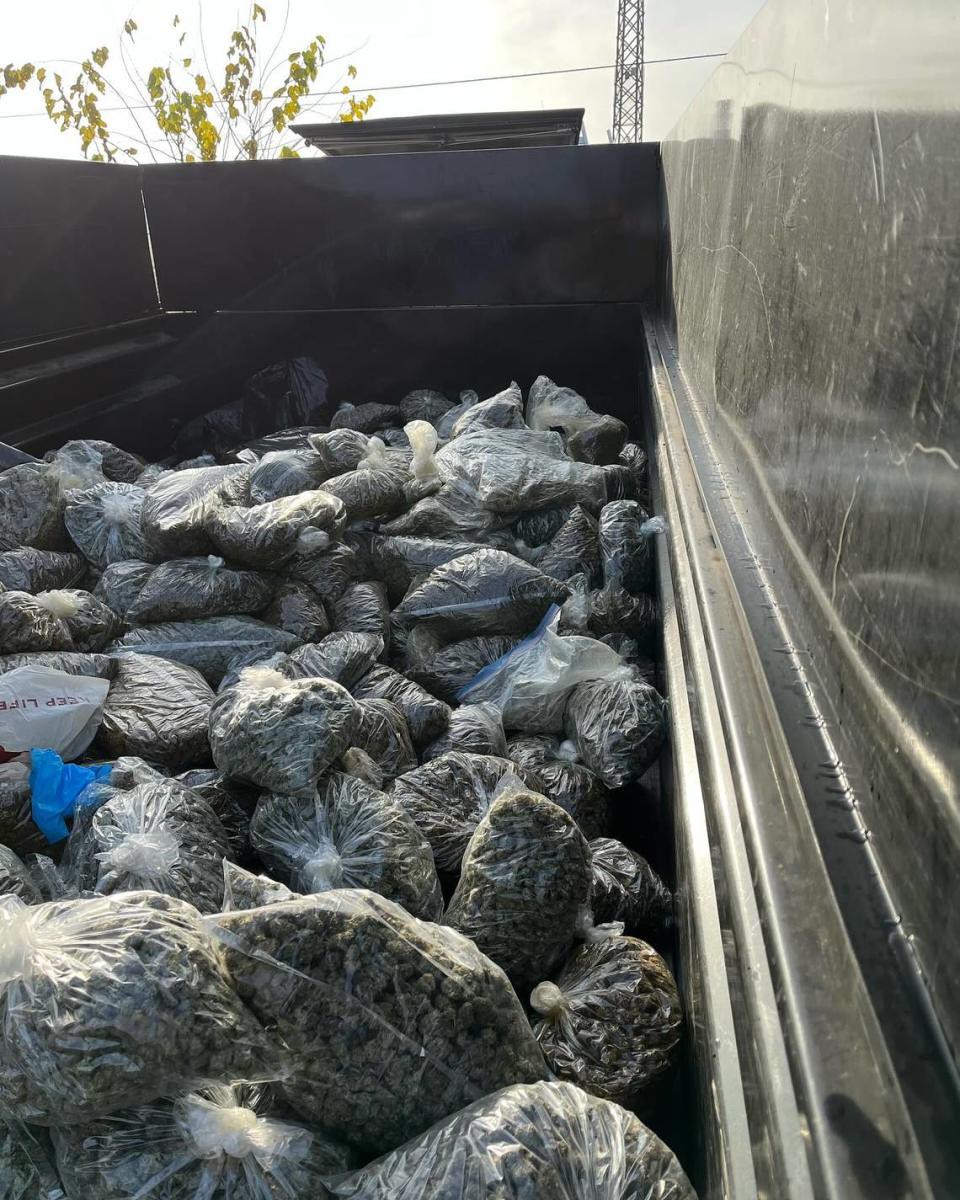Is black-market marijuana being sold in Stanislaus dispensaries? No one knows & here’s why
Black-market marijuana in Stanislaus County is a multimillion-dollar industry, with customers coast to coast.
There’s a growing suspicion among some that customers include local, legal dispensaries, but it’s difficult to substantiate the theory.
The way legal marijuana is tracked and traced, from seed to sale, is all through software designed to monitor legal weed specifically. The Stanislaus County Sheriff’s Office’s focus is on disrupting illegal grows, not on inspections and oversight of dispensaries.
One thing is certain, though: There is an abundance of illegal weed produced in the county, according to Sgt. Frank Soria, leader of the Sheriff’s Office’s Marijuana Enforcement Team.
“We’re theorizing that because of that, there’s a lot of black-market marijuana that is making its way toward dispensaries,” Soria said. “It’s just very difficult to prove without actually opening up a case at a local dispensary.”
Local dispensary owner Jason David said he believes illegal weed is making its way into dispensaries because of taxes and fees that contribute to a growing demand to increase profits.
“What I think’s going on is we don’t just have the black market, we have the white market and now we have the gray market,” David said. “I understand why some people are doing it because they’re struggling to survive and pay the taxes and fees. I don’t think it’s fair to the people that don’t (sell illegal marijuana) like us to have to pay the consequences of paying for everything, doing everything legit.”

In an annual report earlier this year to the Board of Supervisors, the Sheriff’s Office reported that it seized about 89,000 pounds in processed weed and destroyed about 6,700 plants in 2023. The street value was estimated at $53 million.
Most of the weed grown and processed in Stanislaus County in the black market gets shipped to places like Chicago, New York, Texas and Florida, said Soria. “I mean, I don’t know what scale you want to use, but I’ll go with one through 10 — 10 being a major issue.” he said. “It’s a 10.”
The operators and staff of these illegal grows vary. Some are locals and others are immigrants and trafficked labor. The working conditions of these grows are typically deplorable.
There also are bigger crime organizations — subsidiaries of Mexican drug cartels — operating in Stanislaus County, Soria said.
While the Sheriff’s Office can intercept thousands of pounds of marijuana worth millions of dollars, Soria said deputies aren’t making a dent.

The amount of processed weed they’ve confiscated, and how much they believe is leaving California, vs. the amount they know is being grown, isn’t adding up to them.
Who’s there to catch illegal weed showing up in dispensaries?
The Marijuana Enforcement Team’s focus is on the identification, investigation and eradication of illegal marijuana grows. Basically, it’s stopping illegal weed at the source.
Enforcing local code at dispensaries, in unincorporated areas, is done by Stanislaus County Marijuana Program’s Code Enforcement. Soria said inspections are done annually but owners will always know about them ahead of time, and it would “be very difficult for us to detect any discrepancies” during an inspection.
The county cannabis program’s expenditures for fiscal year 2024, which began July 31, stated that $110,000 was set aside for inspections. As of Dec. 31, zero dollars had been spent on inspection, while just over $3 million was budgeted for the Sheriff’s Office. The total amount of expenses for fiscal year 2024 was listed as $4.4 million.
Every legal product from seed to sale is tracked with a barcode registered to the state’s Department of Cannabis Control. Every cultivator, distributor, manufacturer and vendor has to register every product at every step of the way through a software called Metrc.
In a statement to the Modesto Bee, the DCC wrote that it regularly checks if there are any anomalies or irregularities in the software. If any are found, they’re investigated.
However, the DCC said that it “does not comment on investigations that may be underway” and could not confirm if any dispensaries in Stanislaus County were under investigation.
For now, the question ‘is illegal weed showing up in local, legal dispensaries’ remains unanswered.



